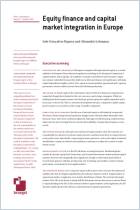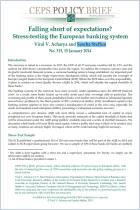
Read or listen offline
Amazon Kindle
auto-generated audio
1×
Log in to listen to the audio summary.
auto-generated audio
Recommendation
Europe has only begun to deal with its distressed debt problem, and it needs to do more, according to economist Alexander Lehmann in this technical but highly accessible analysis. He posits that Europe’s fledgling secondary market for loans currently has systemic imperfections that severely limit investor demand. Lehmann proposes that regulators and investors collaborate to make the divestment process more efficient and transparent. getAbstract recommends this astute synopsis to bankers, investors and regulators.
Summary
About the Author
Alexander Lehmann is a nonresident fellow at Bruegel, a European think tank.
























Comment on this summary